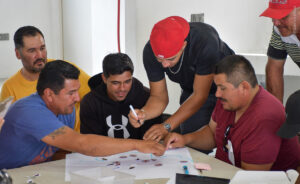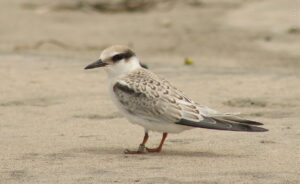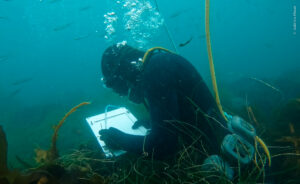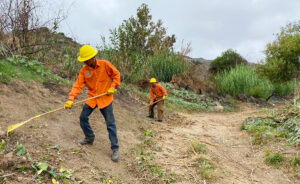The El Vizcaino Biosphere Reserve in the Baja California is one of our country’s largest Natural Protected Areas. Its extension exceeds 2 million hectares and is located in Mulege, Baja California Sur. El Vizcaino is characterized by a vast semi-arid ecosystem with wetlands, marshes, and mangroves. The Red Mangrove (Rizophora mangle) and White Mangrove (Lagunaria racemosa) are especially important in San Ignacio Lagoon because it is the northernmost latitude where mangroves can be found on the Pacific coast.
Because of its size, great biodiversity, and the ecological services it provides, El Vizcaino represents one of our greatest conservation challenges. Among the conservation activities we carry out in El Vizcaino is the installation of watchtowers and signs for inspection. In 2005, together with organizations such as the International Community Foundation, the Natural Resources Defense Council (NRDC) and Costasalvaje, we formed the Alliance for the Conservation of San Ignacio Lagoon, which allowed the legal protection of 35 properties under the figure of Conservation Easement, thus protecting around 57,000 hectares, including the lands considered common use lands of the Luis Echeverria Alvarez ejido.
In 2011, the Ministry of the Environment and Natural Resources (SEMARNAT) decreed the creation of the Management and Use Unit (UMA) in a National land adjacent to San Ignacio Lagoon, as a legal tool to protect 80,550 hectares of desert and coastal ecosystems. Since then, as Pronatura Noroeste, we have the concession and responsibility to safeguard the conservation status of this property.
We also carried out training and education activities with the community to foster a sense of belonging and respect for biodiversity, such as the campaign “For a plastic-free sea,” in which 500 residents of San Ignacio lagoon participated. The use of reusable cloth bags for shopping was promoted to reduce plastic bag pollution in the area.
Two of three sanctuaries are located in this reserve, Laguna Ojo de Liebre, and Laguna San Ignacio, where the Gray Whale (Eschrichtius robustus) comes every year to have and raise their calves. The third is Magdalena Bay, south of El Vizcaino, in Comondu. This means that if the environmental conditions of El Vizcaino are seriously altered, the Gray Whale, as well as many other species, would suffer a considerable deterioration in their population. In some cases, losing El Vizcaino’s habitat could mean a direct path to extinction for some species.
Hence the high importance of our work in this nature reserve. Some of the species that benefit from the protection of El Vizcaíno, in addition to the Gray Whale, are the Green Turtle (Chelonia mydas), the Hawksbill Turtle (Eretmochelys imbricata) and the Olive Ridley Turtle (Lepidochelys olivacea). Among the birds, we can mention birds of prey such as the Osprey (Pandion haliaetus) and the American Kestrel (Falco sparverius), as well as migratory birds such as the Coacoxtle Duck (Aythya valisineria), the Squeaker Duck (Bucephala clangula), and the Collared Goose (Branta bernicla nigricans).
In terms of conservation, the Peninsular Pronghorn (Antilocapra americana peninsularis) has special relevance in El Vizcaíno. This antelope endemic to the Baja California peninsula was on the verge of extinction a few decades ago. Its population has partially recovered, but it still needs to be protected and this is one of the main reasons why this NPA was created. In fact, the Pronghorn corridor is located right in the core of the protected area.
The Desert Fox (Vulpes macrotis) and the Badger (Taxidea taxus) are other mammals that inhabit the area. Both species are considered at risk under Mexican Standard NOM 059.
Collaborate with us in conserving the Biosphere Reserve and its extraordinary marine and coastal ecosystems.
















